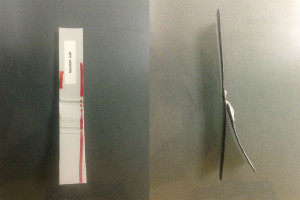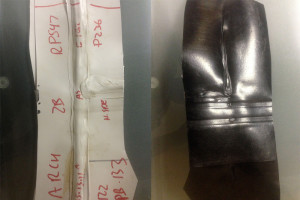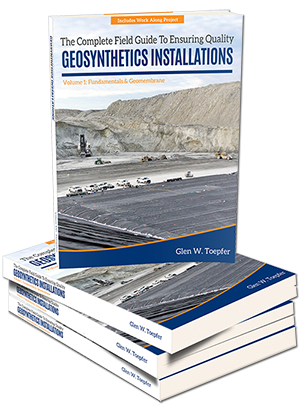Like an iceberg, things on the surface are not always what they appear to be below the surface.
This is a follow up to my previous commentary in The Sky Is Falling, The Sky Is Falling!
Everyone seems to know that extrusion welds can be problematic, not only in construction but in long-term performance. An equally important challenge is verifying the constructed seam integrity. An extrusion destruct is not only a chance to evaluate seam strength and adhesion properties—it is an opportunity for global inspection of the weld to see what truly lies below the surface.
(Click on the images below to enlarge them.)
Solely for visual purposes, I am using white geomembrane to illustrate my points and am not promoting one product over another.
Some things such as fishmouths or excessive grinding (not covered by weld) can be visually observed without destructive inspection of extrusion welds. Other things are hard, if not impossible, to identify solely based on inspection of a completed extrusion weld.
Example 1 is the top view of an extrusion weld coupon that looks perfectly normal. The picture on the right shows a side view of the same coupon, revealing the weld was drastically off-center.
In Example 2, we see on the left a view of the completed repair that does not show much to be concerned with. However, when the sample is flipped over, excessive heating and burn-through are observed.
The point here is that things are not always as they seam…er, seem. There is a lot to be learned from looking at actual field extrusion welds that you simply cannot learn from a trial weld.





